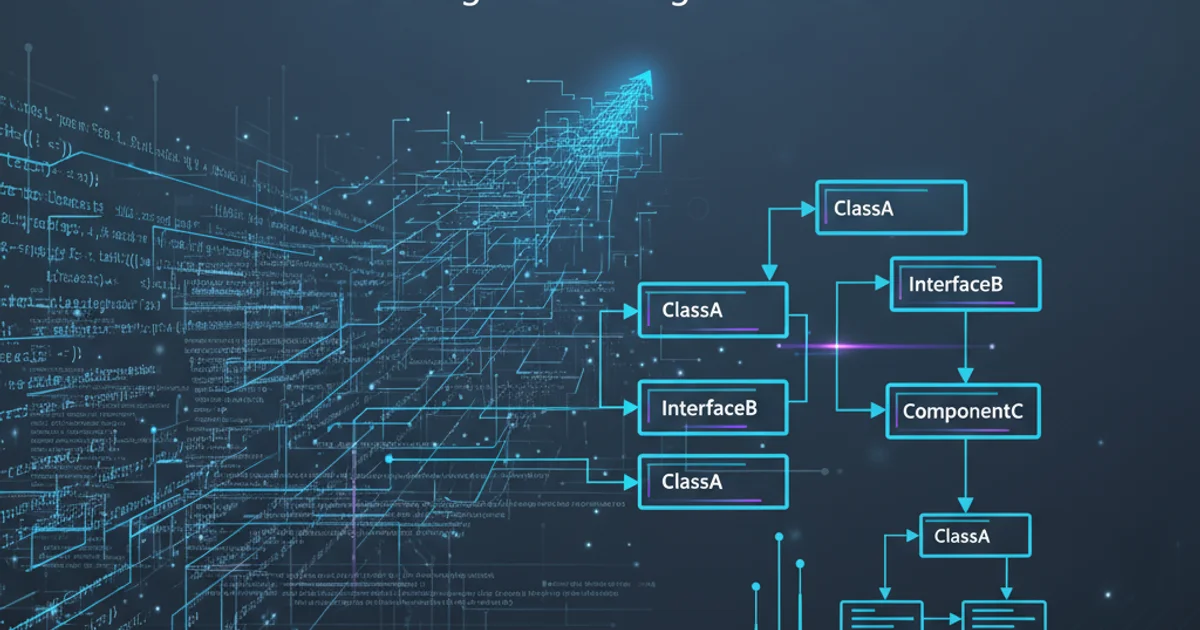Text based UML Diagram Generators
Categories:
Generate UML Diagrams with Text: A Comprehensive Guide

Explore the power of text-based UML diagram generators to create clear, maintainable, and version-controlled diagrams for software design and documentation.
Unified Modeling Language (UML) diagrams are essential tools for visualizing, specifying, constructing, and documenting the artifacts of a software system. Traditionally, creating these diagrams involved graphical editors, which can be cumbersome for version control, collaboration, and automation. Text-based UML diagram generators offer a powerful alternative, allowing developers to define diagrams using simple, human-readable syntax. This approach brings the benefits of code—such as versioning, diffing, and scripting—to your diagrams, making them an integral part of your development workflow.
Why Choose Text-Based UML Generation?
The shift from graphical editors to text-based tools for UML diagrams is driven by several compelling advantages. Text files are inherently easy to manage with version control systems like Git, enabling seamless collaboration, clear history tracking, and straightforward merging of changes. This eliminates the common pain points associated with binary diagram files, such as merge conflicts and difficulty in reviewing changes. Furthermore, text-based definitions can be easily integrated into continuous integration/continuous deployment (CI/CD) pipelines, allowing diagrams to be automatically generated and updated alongside your code. This ensures that your documentation remains consistent and up-to-date with your software's evolution.
Popular Text-Based UML Generators
Several excellent tools are available for generating UML diagrams from text. Each has its strengths, syntax, and supported diagram types. Two of the most widely adopted are PlantUML and Mermaid. PlantUML is a mature tool known for its extensive support for various UML diagram types and its ability to integrate with many documentation systems. Mermaid, on the other hand, is gaining popularity due to its JavaScript-based rendering, making it ideal for web-based documentation and markdown environments. Both tools allow you to define complex diagrams using a simple, intuitive syntax, which is then rendered into high-quality SVG, PNG, or other image formats.
@startuml
Alice -> Bob: Authentication Request
Bob --> Alice: Authentication Response
Alice -> Carol: Another authentication Request
Alice <-- Carol: Another authentication Response
@enduml
sequenceDiagram
participant Alice
participant Bob
Alice->>Bob: Hello Bob, how are you?
Bob-->>Alice: I am good thanks!
Bob->>Carol: Hi Carol
Carol-->>Bob: Hi BobA simple sequence diagram generated using Mermaid syntax.
Integrating Text-Based Diagrams into Your Workflow
Integrating text-based UML generators into your development and documentation workflow is straightforward. For local development, you can use IDE plugins (e.g., for VS Code or IntelliJ) that provide real-time previews of your diagrams as you type. For documentation, tools like MkDocs, Sphinx, or even GitHub/GitLab markdown renderers often have built-in support or extensions for PlantUML and Mermaid. This allows your diagrams to live alongside your code and documentation, ensuring they are always accessible and up-to-date. In CI/CD pipelines, you can automate the generation of diagrams using command-line tools, converting your text definitions into image files that can be published to a documentation portal or artifact repository.
flowchart TD
A[Write Diagram Code] --> B{Commit to Git}
B --> C[CI/CD Pipeline Triggered]
C --> D[Generate Diagrams (e.g., PlantUML/Mermaid CLI)]
D --> E[Publish Diagrams to Documentation Site]
E --> F[View Up-to-date Diagrams]Workflow for integrating text-based diagrams into a CI/CD pipeline.
# Example of generating a PlantUML diagram from the command line
java -jar plantuml.jar sequence_diagram.puml -tsvg
# Example of generating a Mermaid diagram using a CLI tool (e.g., mermaid-cli)
mmdc -i flowchart_diagram.mmd -o flowchart_diagram.svg